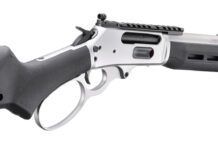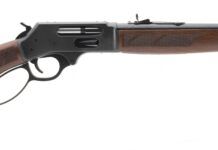The 44 Remington Magnum has been a favorite hunting cartridge for some of our test team members who live in states where straight-wall cartridges are legal for deer hunting, but where short sight line conditions keep ranges way down. Chambered in short, carbine-length rifles, the 44 Rem. Mag. can be quick to shoulder, fast to shoot, and offer plenty of power. As one of our 44 Rem. Mag. hunters said: “They make big holes and leave a nice blood trail.” These rifles are lightweight and make for easy carry. In brush-choked terrain when pushing deer, sitting in tree stand for a black bear, or waiting on pigs to wallow, these carbines offer power, and in lever-action models, super-fast follow-up shots. They can also make a good truck gun.
While lever-action 44 Rem. Mag. carbines are common, we wanted to look at something different and assembled three candidates. To serve as a baseline, we chose the Rossi R92, a clone of the iconic Winchester Model 1892 and a good example of a typical lever-action 44 Mag. carbine with exposed hammer, iron sights and tubular magazine that’s loaded via a loading port. The Ruger 77/44 is quite different. It is a bolt-action rifle and comes with scope mounts and detachable rotary magazine. The Ruger 96/77 is a lever-action carbine similar to the Savage Model 99. The hammer is enclosed in the receiver, it has a scope mount built into the receiver, and uses a detachable magazine. The 96/77 was produced from 1996 through 2004 and our test sample was lightly used. The R92 and 77/44 are both current production guns and easily obtained; used 96/44 models are also fairly easy to find, especially on online gun-auction websites.
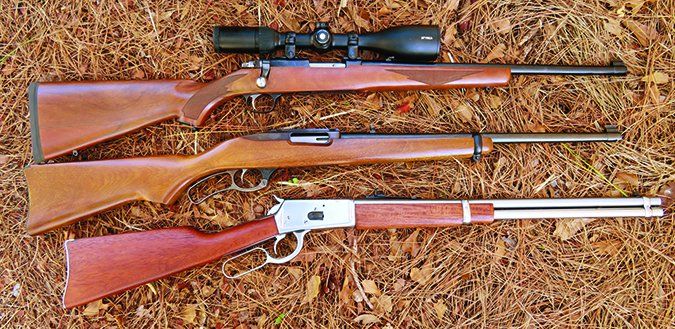
How We Tested
With the lever-action 96/44 and R92, we used open sights at 50 yards. Even though shooting with open sights pushed the envelope on our skill and potential accuracy, we were pleased with our results. We decided to test the two lever guns with open sights and test the bolt action with a scope since scope rings were packed with the rifle.
We had three 44 Rem. Mag. loads on hand: our go-to Black Hills 240-grain JHP, SIG V-Crown 240-grain JHP, and Grizzly Cartridge Company’s 300-grain WFNGC (Wide Flat Nose Gas Check). The Grizzly round is a solid, cast lead bullet that uses a gas check because Grizzly loads these lead, non-jacketed bullets to a fast velocity. We tested the rifles wearing a thin flannel shirt over a T-shirt — not typical hunting attire of a jacket or coat, but the light clothing gave us a better chance to assess felt recoil with the different stock types. It was a successful and useful strategy. We also ran a 44 Special load through these rifles to see if these less-powerful cartridges posed any cycling issues. (We’d stick with 44 Rem. Mag. loads for hunting.) We found a big difference between points of impact of a 44 Special and 44 Rem. Mag. cartridge, so be aware that you will need to use some good old Kentucky elevation when switching between cartridges. We also noticed differences between the 240-grain JHP 44 Rem. Mag. ammo loads. The SIG ammo averaged 199 fps faster than the Black Hills and grouped higher at 50 yards. This is a good reminder to ensure factory muzzle velocity as well as the bullet weight and type are similar when switching ammo brands. The Grizzly ammo also had an average increase in muzzle velocity of 214 fps over the Black Hills.
44 Remington & 44 Special Magnum Range Data
| SIG Sauer V-Crown 240-gr. JHP | Ruger 77/44 | Ruger 96/44 | Rossi R92 |
| Average velocity | 1669 fps | 1687 fps | 1675 fps |
| Muzzle energy | 1482 ft.-lbs. | 1517 ft.-lbs. | 1495 ft.-lbs. |
| Smallest group | 0.45 in. | 1.51 in. | 1.83 in. |
| Average group | 0.48 in. | 1.57 in. | 2.16 in. |
| Black Hills 240-gr. JHP | |||
| Average velocity | 1245 fps | 1330 fps | 1322 fps |
| Muzzle energy | 924 ft.-lbs. | 943 ft.-lbs. | 932 ft.-lbs. |
| Smallest group | 0.61 in. | 0.99 in. | 1.77 in. |
| Average group | 0.76 in. | 1.10 in. | 1.93 in. |
| Grizzly Cartridge Company 300-gr. WFNGC | |||
| Average velocity | 1517 fps | 1481 fps | 1530 fps |
| Muzzle energy | 1533 ft.-lbs. | 1461 ft.-lbs. | 1560 ft.-lbs. |
| Smallest group | 0.94 in. | 0.53 in. | 2 in. |
| Average group | 1.5 in. | 0.82 in. | 2.09 in. |
| HSM Cowboy Action 200-gr. RNFP | |||
| Average velocity | 950 fps | 955 fps | 960 fps |
| Muzzle energy | 401 ft.-lbs. | 405 ft.-lbs. | 409 ft.-lbs. |
| Smallest group | 1.04 in. | 1.05 in. | 1.01 in. |
| Average group | 1.55 in. | 1.62 in. | 1.49 in. |
| To collect accuracy data, we fired three-shot groups from a bench using a rest. Distance: 50 yards with open sights (96/77 and R92) or optics (77/44). We recorded velocities using a ProChrono digital chronograph 15 feet from the muzzle. | |||
The rifling twist rate in the two Ruger rifles was 1:20 inches, which stabilizes traditional 44 Mag. bullet weights like 240 grain and the longer and heavier bullets in the range of 300 to 325 grains. The Rossi has a 1:30-inch twist rate, which is faster than the standard pistol twist rate of 1:38 for the round. Data shows the accuracy of the 300-grain Grizzly load through the Rossi was not as tight as it was with the 240-grain loads. Still, a 2-inch group at 50 yards with irons is MOP (minute of pig) in our book. We ran HSM Cowboy Action 44 Special rounds through the rifles and found this cartridge down right delightful to shoot through these light carbines.
The 44 Mag. produces stout recoil in a handgun. In lightweight carbines like the three tested, we found the Rossi and Ruger gave us the worst shoulder beating. After 20 rounds, recoil became very noticeable due to the Rossi’s straight stock and steel recoil pad. The recoil in the 94/44 was more tolerable, and we attribute that to the pistol-grip stock. The recoil in the 77/44 was very tolerable due to the stock and rubber recoil pad. It’s all a matter of physics. A lightweight carbine pushed rearward by velocity and the mass of a fast-moving, heavy bullet does produce a shove. In a hunting situation where only a few rounds — if that — may be fired, we felt recoil wasn’t a deal breaker. On the other hand, don’t think running through a box of 240-grain bullets going 1400 fps or more is going to enjoyable.
While we looked for accuracy, we also looked at ease of use. Unloading and loading is what hunters do most often. Cycling the action for a fast follow-up shot is also common in hunting situations. Which one of these rifles would we prefer to use in a tree stand? Read on to find out.
Rossi R92 Model 920442093 44 Remington Magnum, $560
GUN TESTS GRADE: A
The R92 is a modern take on the iconic Winchester Model 1892 rifle. This rifle offers nostalgia with modern refinements. What made the original ’92 great for hunting and defense is what makes the R92 great for hunting and defense.

| ACTION TYPE | Lever-action, exposed hammer |
| OVERALL LENGTH | 37.25 in. |
| OVERALL HEIGHT | 7 in. |
| WEIGHT UNLOADED | 5.6 lbs. |
| WEIGHT LOADED | 6 lbs. |
| RECEIVER | Stainless steel |
| BARREL | 20 in.; 1:30 RH twist |
| FINISH | Bright stainless |
| STOCK | Smooth hardwood, steel buttpad |
| LENGTH OF PULL | 13.25 in. |
| MAGAZINE | 10-round tube |
| FRONT SIGHT | Blade |
| REAR SIGHT | Adjustable buckhorn |
| TRIGGER | 4.3 lbs., single stage |
| SAFETY | 2 position |
| WARRANTY | 1 year |
| TELEPHONE | (800) 948-8029 |
| WEBSITE | RossiUSA.com |
| MADE IN | Brazil |
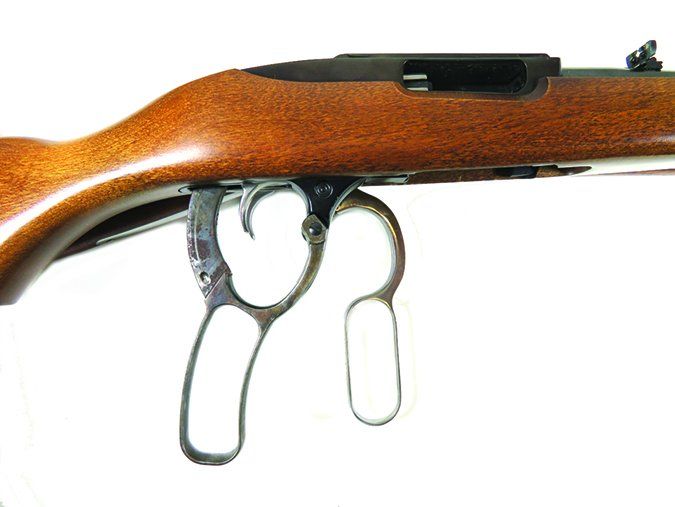
The R92 is a knockoff of the Winchester Model 1892, and, in our opinion, Rossi does a great job of recreating a more modern take on this iconic rifle. Our sample was made of stainless steel with a bright finish. We liked the stainless finish and assume it will dull over time and use. The Brazilian hardwood stock and forearm were fitted well. We think this is a sharp-looking rifle.
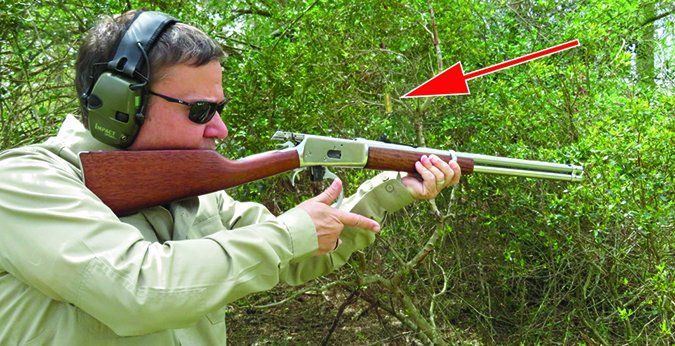
The black buckhorn rear sight was traditional and adjustable via a stepped ladder for elevation. For windage, we needed to tap the sight over slightly, which we assumed we would need to do with a Rossi. We have needed to do this in the past with Rossi rifles, and we did with the sample here, as it shot slightly to the right at 50 yards. The front blade is black and wears a brass bead and is dovetailed into the barrel. We thought the sights were adequate, though we found we could shoot the 96/44 opens sights slightly better.
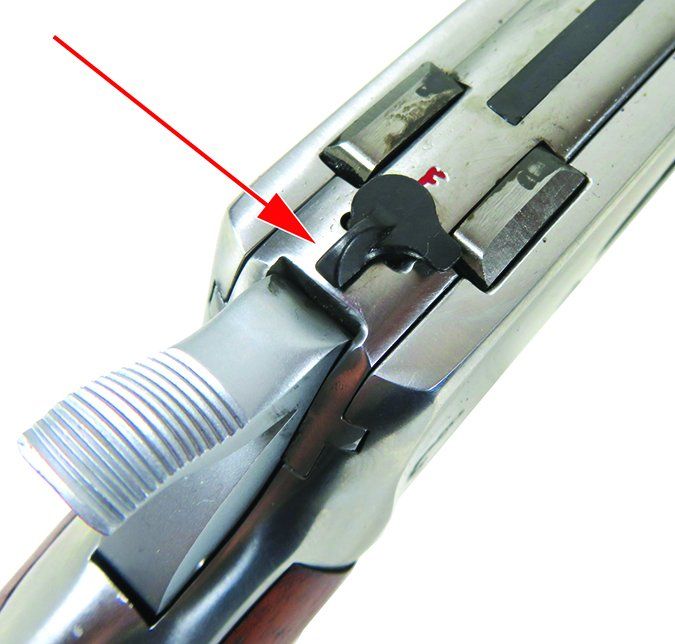
Loading was not a chore with the Rossi. Some loading ports have stiff springs on the loading gate with sharp edges, so when a cartridge is inserted, brass is shaved off the case. Not so with the R92. There was a small circular cut in the loading port and loading gate that eased loading. This cut is not traditional and may turn purists away, but we liked the ease of loading. We were actually able to load 11 of the 44 Mag. cartridges in the tube with no issues. With the magazine tube fully loaded, there is some heft to R92. This helps with managing recoil, but we assume most hunters will only load five rounds or whatever your state hunting laws dictate. We did not bust our thumbs loading the Rossi. The traditional tube magazine was easy to load, but unloading meant we racked the lever until it was empty. Picking up cartridges that fall into dirt or snow is a pain, so make sure you clean your rounds off or unload in a place where the cartridges fall in a clean environment. Or have a buddy stand off to the side and catch the rounds in his hat.
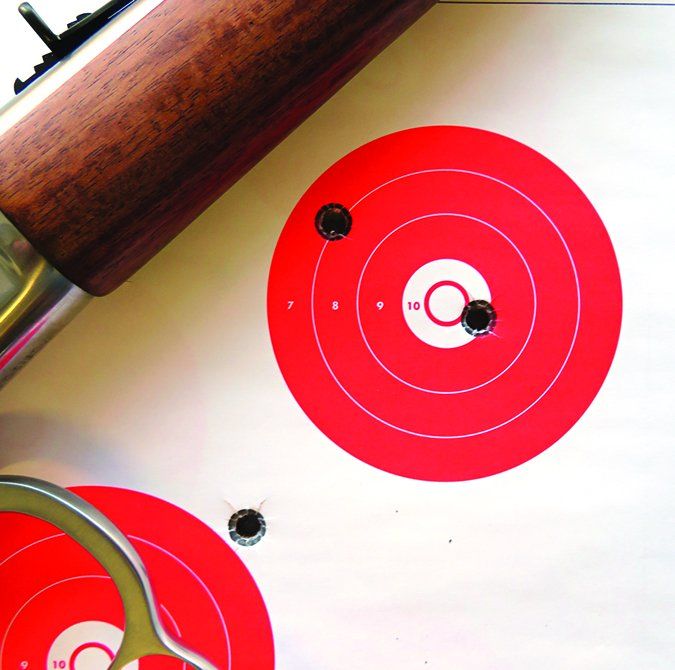
The lever was smooth edged and not sharp, so working the lever fast and hard was fun and easy on our hands. The action was not as smooth as the action of the 96/44, but it was better than what we expected. Quite a bit better. We did notice tool marks inside the action, but the rifle cycled smoothly and had a nice trigger. The hammer did not require lots of thumb muscle to cock or hold and place on half cock. The serrations on the hammer spur offered good texture. The trigger broke at 4.3 pounds on average.
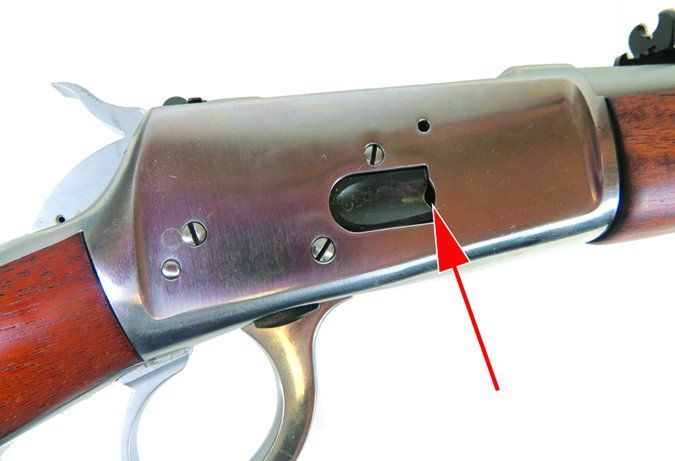
Also untraditional, the R92 has a manual safety located on top of the bolt. The small safety lever can be rotated 90 degrees to place the rifle in Safe mode or in Fire mode. In Safe mode, the action can be cycled to unload the R92, and the hammer could be snapped forward via a press of the trigger, though the hammer does make contact with the firing pin, the firing pin is held back by the safety lever. The Rossi also has a half-cock notch on the hammer that blocks the trigger. Some kitchen-table gunsmiths like to remove the safety, but in our opinion, it adds a level of safety to the rifle. There are also plenty of aftermarket spring kits for those who like to tinker on hammer and trigger springs.
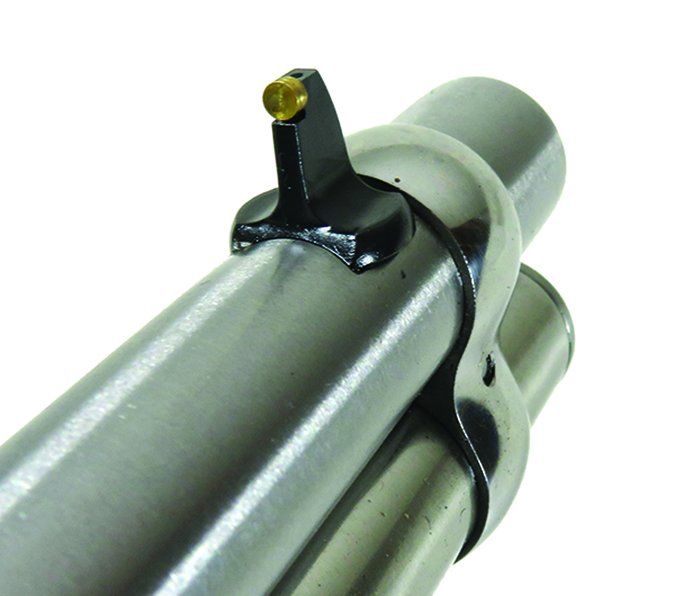
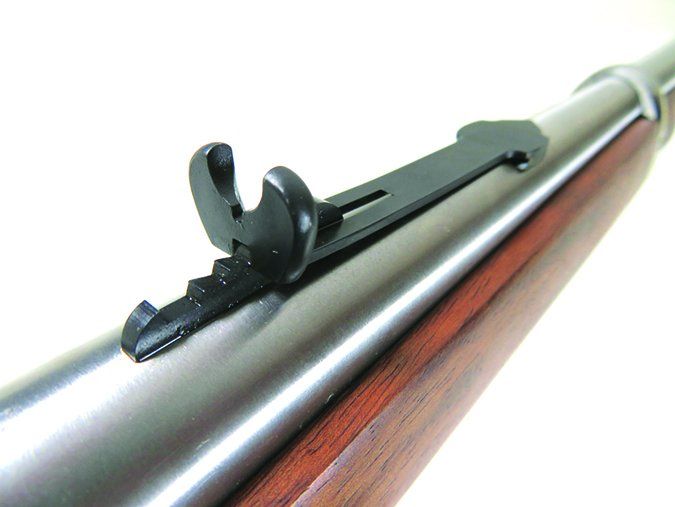
Though not the most accurate of the rifles tested, we did find we could squeeze out decent accuracy for hunting and plinking. The Black Hills load gave us the best accuracy, and the SIG and Grizzly ammo provided the most recoil. After 20 rounds, we found the full-power 44 Rem. Mag. loads got our attention. Make a note: The R92 thumps good on both ends. We could have fired 44 Special loads all day without getting a sore shoulder.
Our Team Said: If you are looking for an easy-to-carry rifle that provides plenty of firepower, then the R92 is a great option. In the back of a truck or tucked behind the bedroom door, this rifle can protect the ranch as well as feed the ranch. The average price of a new Model 1892 knockoff is about $850 to $1800, depending on the brand, barrel style, the quality of the wood, and where you purchase it. Winchester has reintroduced its Model 1892, and is the model most similar to the Rossi we tested. That rifle has a suggested list price over $1000. The Rossi is a bargain in comparison.
Ruger 77/44 Model 7401 44 Remington Magnum, $754
GUN TESTS GRADE: A-
The 77/44 offers accuracy and power in a lightweight rifle. We disliked the magazine and downgraded it a half a grade. The magazine aside, this a nice hunting rifle out to 100 yards.

| ACTION TYPE | Bolt-action, 90-degree lift |
| OVERALL LENGTH | 38.5 in. |
| OVERALL HEIGHT | 6.7 in. |
| OVERALL HEIGHT (w/ optic) | 8.7 in. |
| WEIGHT UNLOADED | 6.1 lbs. |
| WEIGHT LOADED (4-rd. mag) | 6.3 lbs. |
| RECEIVER | Alloy steel |
| BARREL | 18.5 in.; 1:20 RH twist |
| FINISH | Blued |
| STOCK | Checkered American walnut, solid rubber buttpad |
| LENGTH OF PULL | 13.5 in. |
| MAGAZINE | (1) 4-round detachable, rotary |
| FRONT SIGHT | Blade w/ brass bead |
| REAR SIGHT | Folding adjustable; scope rings included |
| TRIGGER | 6 lbs., single stage |
| SAFETY | 3 position |
| WARRANTY | None written |
| TELEPHONE | (888) 220-1173 |
| WEBSITE | Ruger.com |
| MADE IN | USA |
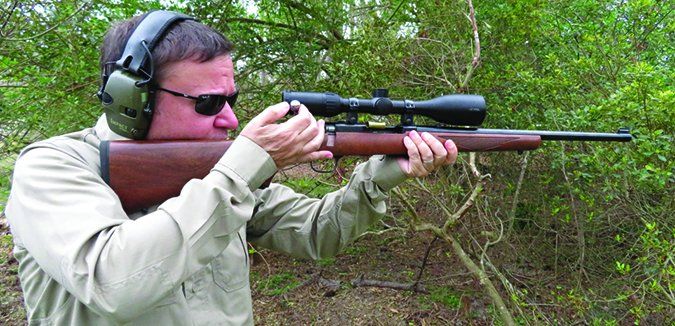
The 77/44 is a rifle old man Ruger would have liked: straight comb stock of American walnut nicely checkered and a blue-steel barreled action. Most testers liked the look, too. This is a traditional bolt action rifle tweaked to run on a pistol cartridge via a rotary four-round magazine that sits flush with the bottom of the stock.
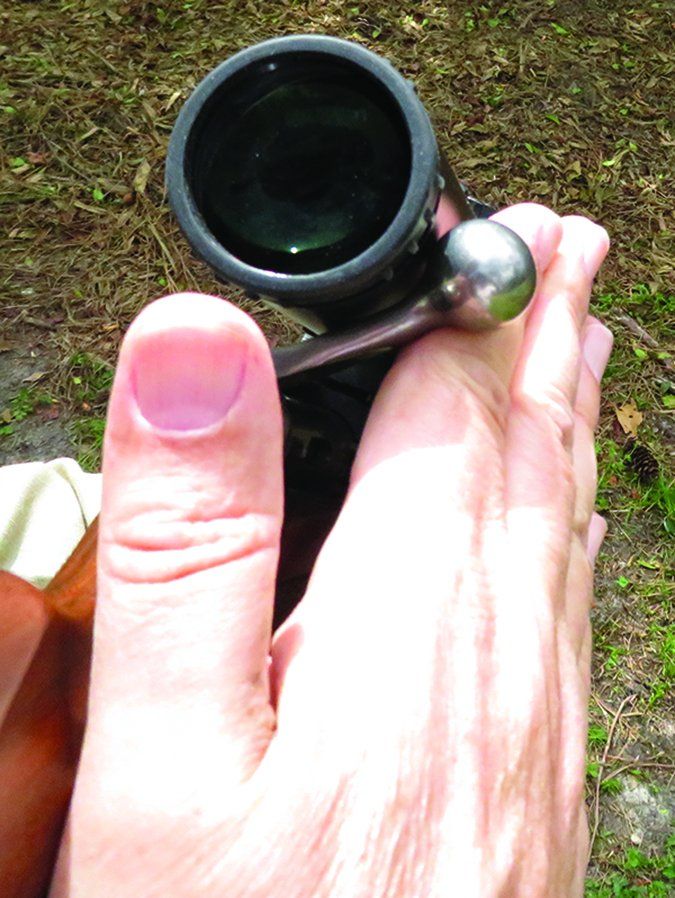
The 77/44 came from the factory with Leupold style 1-inch rings, and we just happened to have a 1-inch Styrka S3 Series 4-12x50mm scope in the shop. We almost wish Ruger would ship rifles with 30mm rings so we can take advantage of the new generation of 30mm scopes. Since the 77/44 is chambered in 44 Rem. Mag., its range is only out to 100 yards, so a low-power scope or red dot would be ideal. The Styrka featured a simple Plex duplex-style reticle. We liked this scope and felt it helped us get the best accuracy out of the 77/44. It has parallax adjustment and the turret caps, like a traditional hunting scope. We think the Styrka scope was more scope than required on the 77/44, but it worked well, and we had a ball punching big holes in the target. As we saw differences in shots between the ammo due to velocity, we found it easy to chase the hole with the turret adjustments and quickly zero the rifle for the specific cartridge.
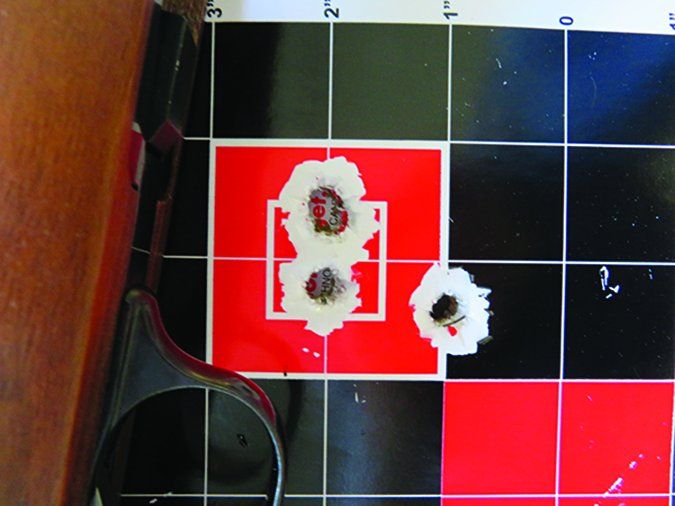
The wood stock was well finished and had machine-cut checkering that offers a nice texture and plenty of hold. The forearm is slender and easy to hold. As you move closer to the receiver, the stock gets fatter and flatter on the bottom. A tasteful plastic grip cap with the Ruger logo was nicely fitted to the pistol grip. The stock also had sling swivel studs. The dark brown rubber buttpad sucked up some of the recoil, making this rifle a pleasure to shoot, even with full-house 44 Rem. Mag. loads. The steel was blued nicely. The barrel wore the same sights as the 96/44 and nearly every other Ruger rifle ever built. To say we are accustomed to these sights is an understatement. We have learned to shoot these sights well, but we opted for the scope and Ruger’s built in scope mount. We are glad we did, since accuracy at 50 yards was excellent.
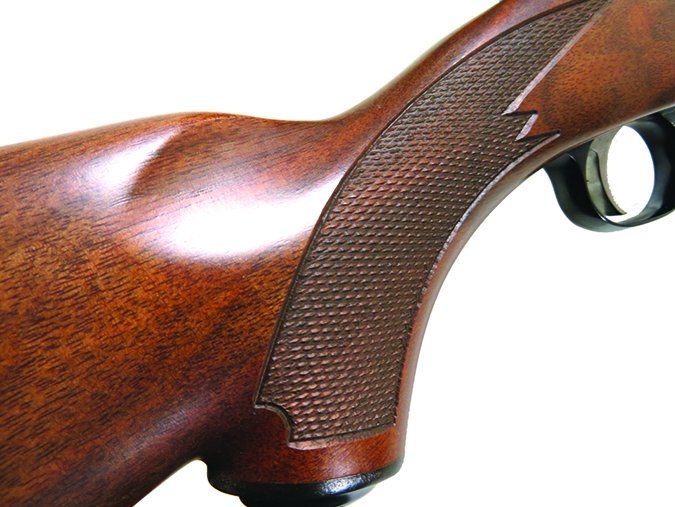
The bolt is matte gray in color and had a 90-degree lift, which means the eyepiece of the scope is very close to the bolt knob when the bolt knob is lifted up. We have become spoiled with 60-degree bolt throws, and we could not run the 77/44 as fast as we would have liked. No big deal, as it is a function of the bolt design and, besides, with the accuracy we achieved, we probably wouldn’t need a fast follow-up shot. Yep, we are that confident in the accuracy of this rifle. We found lifting the bolt up with our trigger finger, racking it back with our trigger finger, then pushing forward with our thumb was fast, but we still needed to crank it down. That was when it slowed us down. The 77/44 could not keep up with the lever actions in the fast follow-up shot test. The trigger was heavy at 6 pounds but had no creep.
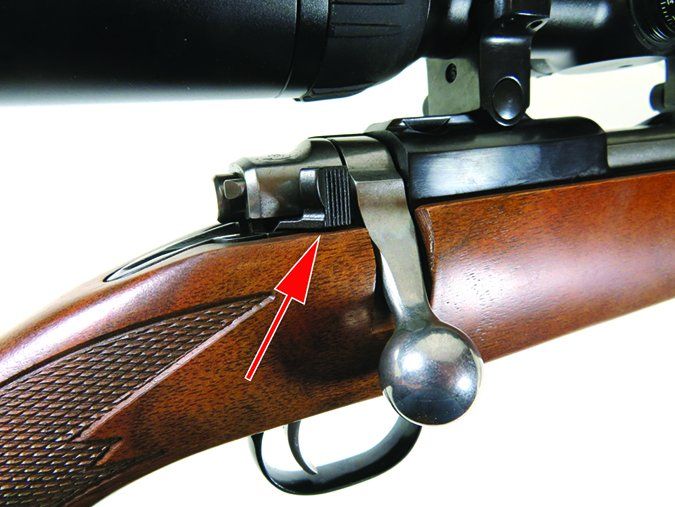
The bolt was easily removed from the receiver via a small bolt button. Press it and pull the bolt free. We liked the three-position safety since it allowed us to unload the 77/44 without removing the magazine in the middle position. With the safety in the full rearward position, the bolt is locked.
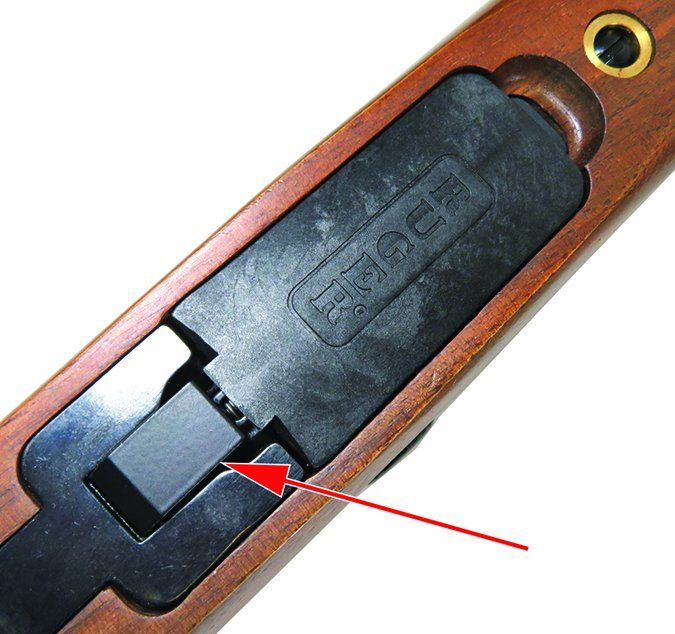
Removing the magazine from the Ruger 77/44 was cumbersome and gave us fits until we learned the trick. The Ruger 96/44 had a similar magazine system to the 77/44, but it was much easier to unload. Something must have been lost when Ruger used the design in the 77/44. Nice rifle. Hate the magazine set up. What caused us grief was magazine insertion and removal. This might as well be a fixed box magazine because it took real effort and finger strength to remove the magazine. Ruger offers two ways to release the magazine in the manual. Might we suggest a drop-free magazine?
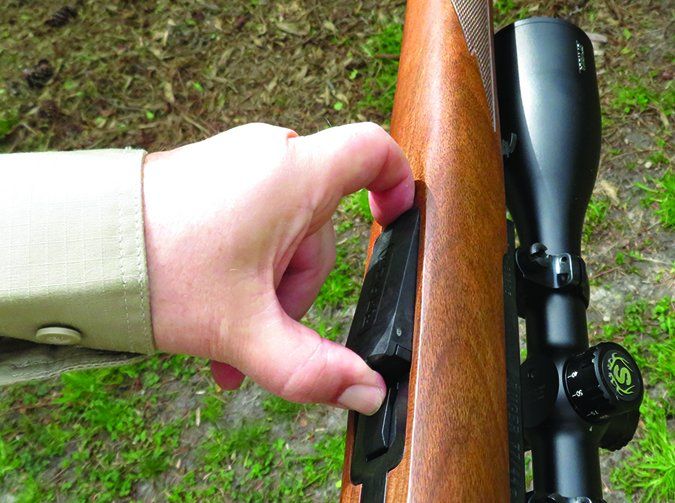
In all fairness, we did learn to become proficient in removal and insertion of the magazine. There is not a lot of wiggle room when inserting or removing the magazine. We have used rimfire versions of the 77 and found the magazines easier to insert and remove. We finally found the pinch method with the support hand was the fastest way to remove the magazine. We also found we could load the magazine while it was inserted in the mag well as if it were a fixed magazine. We also loaded single rounds by placing the round on top of the magazine and pushing the bolt forward. The magazine soured us on the rifle, until we fired it.
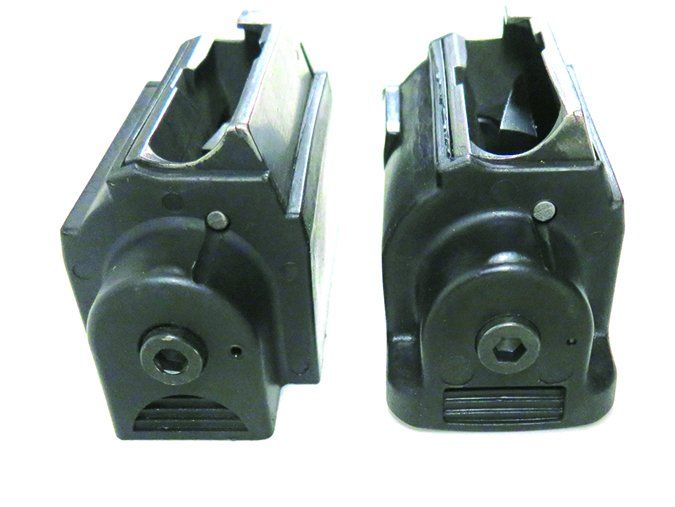
With SIG V-Crown 240-grain JHPs, we were able to shoot three-shot groups that measured slightly more than the bullet diameter. With our go-to Black Hills load, the groups were slightly larger. We were driving tacks with the 77/44, and that gave our testers confidence in this rifle. One team member made an offer to buy the rifle while still at the range.
Our Team Said: If you can live with the magazine (and some of us said we could), you can expect a short, handy bolt-action rifle that is plenty accurate and comfortable to shoot. It is a nice set up for medium-sized game out to 100 yards.
Ruger Model 96/44 44 Remington Magnum, $775
GUN TESTS GRADE: A
The 96/44 offers a super-fast follow-up shot due to its short-throw lever. It is easy to tote due to its light weight and offers plenty of power and accuracy. A good brush gun, in our opinion.

| ACTION TYPE | Lever action |
| OVERALL LENGTH | 37.25 in. |
| OVERALL HEIGHT | 6.5 in. |
| WEIGHT UNLOADED | 6.1 lbs. |
| WEIGHT LOADED (4-rd. mag) | 6.1 lbs. |
| RECEIVER | Alloy steel |
| BARREL | 18.5 in.; 1:20 RH twist |
| FINISH | Blued |
| STOCK | Smooth hardwood, steel buttpad |
| LENGTH OF PULL | 13.25 in. |
| MAGAZINE | (1) 4-round detachable rotary |
| FRONT SIGHT | Blade w/ brass bead |
| REAR SIGHT | Folding adjustable |
| TRIGGER | 6.6 lbs. |
| SAFETY | 2-position crossbolt button |
| WARRANTY | None written |
| TELEPHONE | (888) 220-1173 |
| WEBSITE | Ruger.com |
| MADE IN | USA |
The 96/44 was produced from 1994 to 2004. Like many other Ruger firearms, the 96/44 is Ruger’s revision of a famous design, and in this case it mimics the Savage Model 99. The 96/44 looks and acts a lot like the old Savage, but the former is different. This lever action uses a short-throw lever, enclosed hammer, and rotary magazine like the Savage, but the similarity stops there. The 96/44 was only chambered in 44 Rem. Mag., unlike the Model 99, which was chambered in a variety of centerfire rifle calibers.
The 96/44’s lever throw is much shorter and hence faster to manipulate than the Rossi R92. There is no exposed hammer, like there is on traditional lever-action rifles such as the R92. The hammer is enclosed inside the receiver, which makes the rifle more streamlined, plus there is little chance of debris getting caught in the action.
The 96/44 uses a cocked-hammer indicator that can be seen and felt. A small brass indicator pin protrudes from the rear of the receiver, letting the shooter know the rifle is cocked and ready to fire. The lever is case hardened and looks sharp next to the blued receiver and barrel. The crossbolt safety is located just forward of the trigger. It was a bit of a stretch to reach the button unless you had long fingers. The hardwood stock is plain and smooth and a bit chubby in the grip, making it feel a bit like an M1 Carbine. The buttplate was steel, and recoil was noticeable after about 25 rounds of the hotter ammo. The sights were traditional Ruger 10/22 style sights: A post front with a brass bead and folding rear sight that could be adjusted for windage and elevation. The 96/44 was dead on, so we did not have to adjust it. The top of the receiver is milled to accept a scope and uses standard Ruger scope rings, so if you wanted to mount an optic, you could.
The plastic magazine is a super-sized 10/22-style rotary magazine that is super easy to load and holds four cartridges. Even the slightly longer 300-grain-bullet ammo loaded with ease, and there was plenty of room for the slightly longer bullet in the magazine. When we pressed the magazine-release button, the magazine dropped into the palm of our hand just like a 10/22 magazine. To insert the magazine, you need to insert the front of the magazine into the magazine well first, then rotate the rear in until it clicks; similar to a 10/22. Additional magazines are available at MidwayUSA.com ($30). The 77/44 magazine is not compatible with the 96/44.
The two-stage trigger pull was more than we’d like at 6.6 pounds, but we were able to deal with it. The smallest three-shot group we fired was 0.5 inches. Across all ammo, the 96/44 averaged about 1.5-inch groups with open sights. We assume with a scope, those groups would shrink.
Our Team Said: The 96/44 is a fast shooting rifle with moderate recoil. Accuracy was good and the action was slick and fast. We liked this rifle and if we saw one on the used rack, we’d probably make an offer. If we owned this rifle, we’d mount a low-power optic on it.
Written and photographed by Robert Sadowski, using evaluations from Gun Tests team testers.
Special thanks to Eastern Outfitters of Hampstead, NC, for their assistance.



























